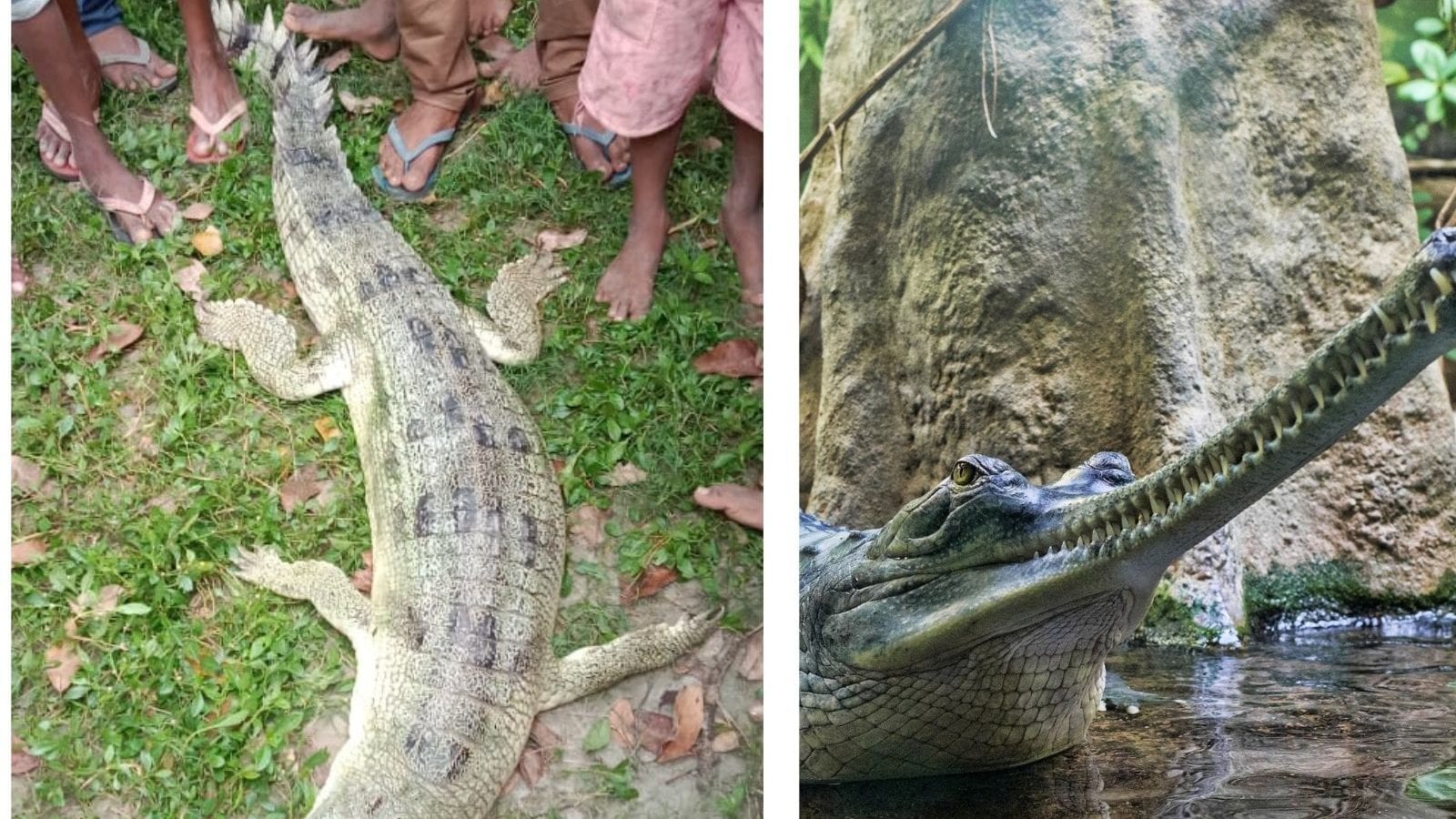The gharial or the ‘gavial’ has been declining in numbers drastically since the 1930s and conservation programmes targeting rise in their numbers in both India and Nepal have focused on reintroducing captive-bred gharials.
What is a gharial?
Gharials, sometimes called gavials, are a type of Asian crocodilian distinguished by their long, thin snouts. Crocodilians are a group of reptiles that includes crocodiles, alligators, caimans, and more.
Habitat
Gharials live in clear freshwater river systems, congregating at river bends where the water is deeper. They’re not well-suited for land so they generally only leave the water to bask in the sun or to nest. Once found from Pakistan to Myanmar, the reptile’s range has shrunk to two countries: India, along the Chambal, Girwa, and Son Rivers; and Nepal, along the Narayani River.
Appearance and behavior
A typical gharial will reach 12 to 15 feet in length and weight up to 2,000 pounds. Gharials regulate their body temperature by basking in the sun to warm up or resting in shade or water to cool down. They do not stalk and lunge at prey like other crocodilians—their snouts contain sensory cells that can detect vibrations in the water. By whipping their heads from side to side, the animals zero in on fish and grab them in their jaws, which are lined with more than a hundred teeth. While adults eat fish, their offspring also eat insects, crustaceans, and frogs.
- Advertisement -
Threats to survival
The International Union for Conservation of Nature classifies the species as critically endangered. The biggest threats it faces are related to human activities.
Since the 1940s, the gharial’s numbers have declined as much as 98 percent due to hunting for traditional medicine and drastic changes to their freshwater habitats. For instance, people have manipulated the flow of rivers, causing certain areas to dry out and making it more difficult for water-reliant gharials to survive. Young gharials are also susceptible to being caught in fishing nets, which can lead to injury or drowning
IFS officer Parveen Kaswan recently retweeted a photo of a ‘strange’ looking reptile that was posted by a local website from the Begusarai district in Bihar. The photo, originally shared by the digital portal ‘The Begusarai’ wrote in Hindi in the caption, “Strange looking aquatic creature trapped in a fishing net set in the old Gandak river in Khodabandpur block area of Begusarai.”
Kaswan reshared the image but made a small observation there. He wrote in Hindi, ” What’s weird about it? This is a common alligator. It is found in many rivers like Gandak, Chambal, Ganga, Ramganga, Girwa, Yamuna.”
Kaswan’s tweet was liked and shared by many of his followers who also agreed that there was nothing ‘strange’ or new about the alligator and this is how common river gators look like.
Some even pointed out how there has to be some form of awareness campaign to help villagers and people in general to identify these common animals which also essentially helps to protect them.


